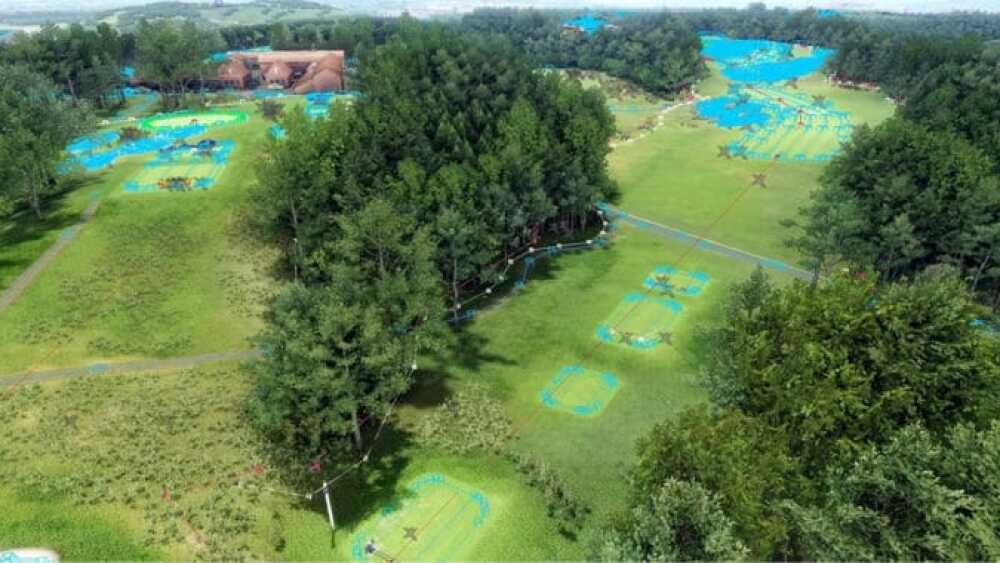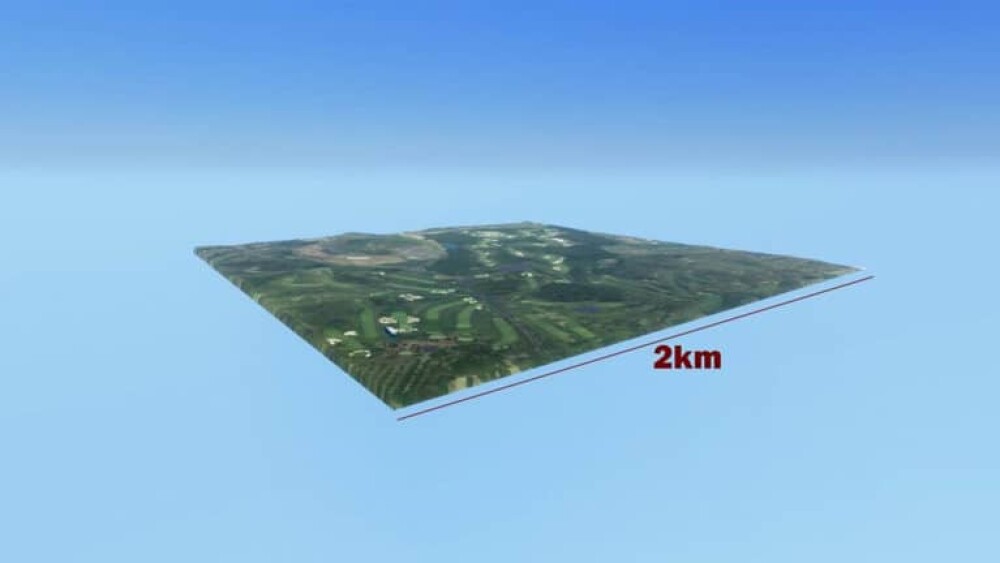GOLFZON premium indoor simulators have more than 190 golf courses from around the world available for play. Each golf course not only looks like the green grass course but also plays nearly identical to the real thing. Hit golf shot off a tree trunk? You’re just as likely to end up further in the rough or bounce back into the fairway. And with GOLFZON, golfers don’t even have to leave your home to experience some of those courses on their bucket list. Let’s take a look at some of the top U.S. courses available to play virtually and GOLFZON’s process for mapping each course.
Play Virtually with GOLFZON on Some of the Best Courses in the World
Playing one of the most iconic golf courses in the world is typically reserved for once-in-a-lifetime trips or well-healed individuals with bottomless expense accounts. For everyone else, getting to play Pebble Beach is just another golf dream. Ever since Bobby Jones arrived at Pebble Beach as the two-time defending U.S. Amateur champion in 1929 Pebble Beach has been an iconic championship. Since that U.S. Amateur, Pebble Beach has hosted a remarkable 13 USGA Championships with only more to come.
Thanks to GOLFZON’s incredible mapping team, anyone has the ability to play the most life-like virtual version of Pebble Beach possible. Plus anyone can play without traveling – either in the comfort of their own home or with friends.
Kiawah Island Ocean Course
The legend of Pete Dye’s Ocean Course at Kiawah Island started with the 1991 Ryder Cup that was dubbed ‘The War By The Shore’ won by the European side. And just like every other golf course on Golfzon, the Ocean Course can be played virtually with stunning detail and true-to-life conditions. With the PGA Championship returning to the Ocean Course in 2021, Golfzon golfers can test their skills on that very same course without leaving the comfort of their indoor golf simulator.
Bethpage Black
The most famous municipal golf course in the country came roaring onto the golf scene thanks to Tiger Woods victory at the 2002 U.S. Open which got him halfway to the Grand Slam after also capturing the Masters earlier that spring. Notorious for its sign overlooking the first tee warning golfers that the course isn’t for the faint of heart or those suffering from a severe slice. So, if golfers really want to test their game, there’s no better golf course than Bethpage Black in a GOLFZON golf simulator.
Additionally, GOLFZON is adding more golf courses every year with no additional cost to the indoor simulator owner. In a given year, GOLFZON maps about 30 courses every year. GOLFZON knows there is a growing hunger for even more North American courses and will be focusing on PGA TOUR courses and/or Top 100 courses to add to the selection in the years to come.
So how does GOLFZON create such life-like golf courses that mimic the look, feel and real world playing scenarios of these golf courses?
Mapping a GOLFZON Golf Course
Every golf course within the GOLFZON system has been mapped with the same meticulous attention to detail to ensure golfers, whether they are familiar with the course or not, have an authentic experience.
The first step in mapping a golf course for GOLFZON entails a site visit to the course. The golf course is then photographed both from the ground and from the air via drone. Capturing both still photography and video is important for realness. The drone video is extremely important for tracking shots within GOLFZON. The still photography will then match the look and feel of golfers standing in GOLFZON as if they were on the golf course.
During the site visit, topographical information is also collected that might not appear on topographical maps. GOLFZON creates the topography based on displacement images that have elevation data and high-res images of the courses. GOLFZON illustrates key areas such as rough, fairway, greens and bunkers with a brush tool. GOLFZON then creates the perspective view of surrounding terrain. Next comes creating trees, grass, stones, the clubhouse and any other buildings. Lastly, tree lines and hole locations are created.
All these details translate into GOLFZON’s proprietary moveable swing plate for golfers to experience uneven lies that simulate actual course slopes, humps and bumps.
Once all the imagery and data is collected on-site, it’s up to GOLFZON designers to bring the golf course to life. All the imagery is translated into 3D data based on this aerial imagery while detailed topographic information is applied to create the most natural-looking landscape and environment – including rocks, trees, sand and water hazards. Even surrounding buildings are depicted to make the course feel real.
After the course is created visually, programmers take the necessary time to ensure the virtual golf course plays the way it would under various weather conditions. Regardless of whether the course is wet and windy or firm and fast, GOLFZON golfers can expect the golf ball to react just as it would on the real course.
Timeline for Mapping a Golf Course for GOLFZON Simulators
Mapping a new 18 hole golf course to be added to GOLFZON’s software takes approximately two months from start to finish. This timeline depends on many variables but, in the scheme of things, is not long at all.
As an example of GOLFZON’s attention to detail when mapping a course, it takes between 20-40 images to map a single golf hole. So, for a traditional 18-hole course there will be around 540 images.
One aspect that impacts time is the architectural style of the course: parkland vs. links. While it seems intuitive that a course with less trees would be easier to map, the opposite is actually true. Courses that are mostly flat and have fewer trees and hills are more challenging because there are no objects covering the horizon, and it makes the course look empty. On the other hand, mapping courses that are mountainous and have more trees and hills are easier because they look much fuller and abundant.
Another occasional hurdle is the actual size of the golf course property and how it’s laid out. While GOLFZON can technically re-create any course digitally, if the dimension exceeds 2km by 2km, GOLFZON has to cut images beyond those dimensions and connect them back together. Most links courses (go out and back in along a body of water), such as Pebble Beach Golf Links, fit this criteria making the mapping process more difficult.
So, regardless of where golfers dream of teeing it up, there are tons of lifelike options within GOLFZON. All of which are just a few taps away in the most realistic indoor golf simulator thanks to the precision and meticulous process GOLFZON engineers employ year-round.




